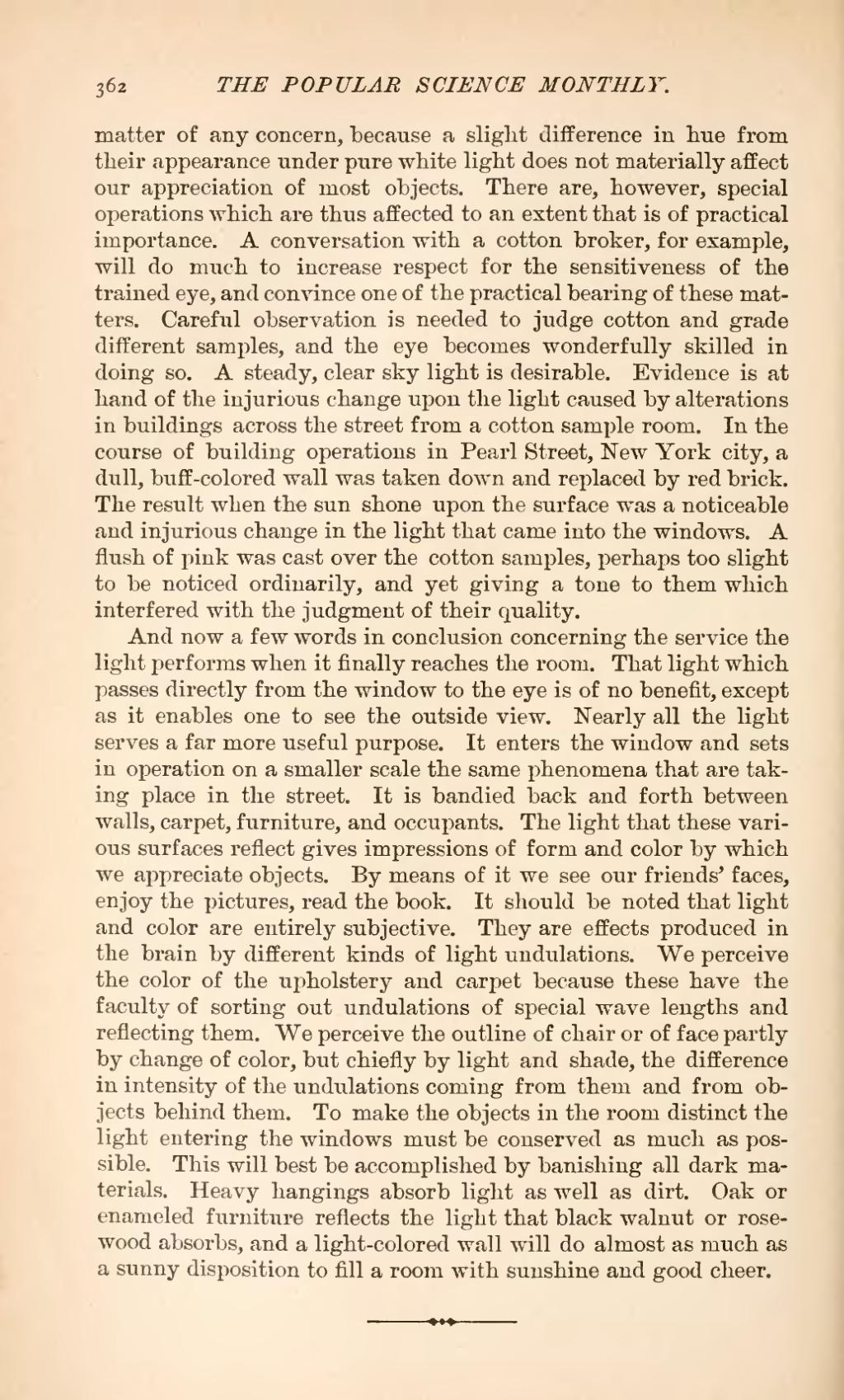matter of any concern, because a slight difference in hue from their appearance under pure white light does not materially affect our appreciation of most objects. There are, however, special operations which are thus affected to an extent that is of practical importance. A conversation with a cotton broker, for example, will do much to increase respect for the sensitiveness of the trained eye, and convince one of the practical bearing of these matters. Careful observation is needed to judge cotton and grade different samples, and the eye becomes wonderfully skilled in doing so. A steady, clear sky light is desirable. Evidence is at hand of the injurious change upon the light caused by alterations in buildings across the street from a cotton sample room. In the course of building operations in Pearl Street, New York city, a dull, buff-colored wall was taken down and replaced by red brick. The result when the sun shone upon the surface was a noticeable and injurious change in the light that came into the windows. A flush of pink was cast over the cotton samples, perhaps too slight to be noticed ordinarily, and yet giving a tone to them which interfered with the judgment of their quality.
And now a few words in conclusion concerning the service the light performs when it finally reaches the room. That light which passes directly from the window to the eye is of no benefit, except as it enables one to see the outside view. Nearly all the light serves a far more useful purpose. It enters the window and sets in operation on a smaller scale the same phenomena that are taking place in the street. It is bandied back and forth between walls, carpet, furniture, and occupants. The light that these various surfaces reflect gives impressions of form and color by which we appreciate objects. By means of it we see our friends' faces, enjoy the pictures, read the book. It should be noted that light and color are entirely subjective. They are effects produced in the brain by different kinds of light undulations. We perceive the color of the upholstery and carpet because these have the faculty of sorting out undulations of special wave lengths and reflecting them. We perceive the outline of chair or of face partly by change of color, but chiefly by light and shade, the difference in intensity of the undulations coming from them and from objects behind them. To make the objects in the room distinct the light entering the windows must be conserved as much as possible. This will best be accomplished by banishing all dark materials. Heavy hangings absorb light as well as dirt. Oak or enameled furniture reflects the light that black walnut or rosewood absorbs, and a light-colored wall will do almost as much as a sunny disposition to fill a room with sunshine and good cheer.
